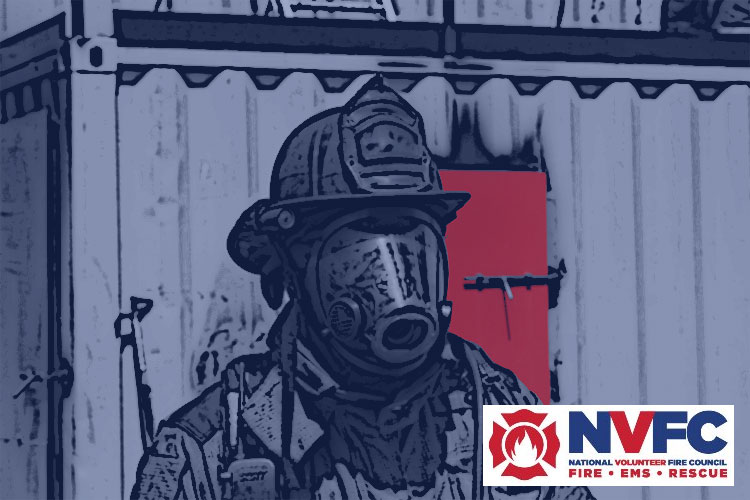

By Kenn Fontenot
Via National Volunteer Fire Council (NVFC)
Developing a comprehensive program for ongoing firefighter training can be difficult for a volunteer department. What skills or topics are important to cover? How do we make the best use of our volunteers’ limited time?
All fire service leaders understand the importance of ongoing training for their members. However, training officers at volunteer departments are often working with limited funding, limited time, and limited resources. They need to design a training program that is the most effective and efficient for their members and their service area.
When asked, “What should our training program consist of?” I answer that programs should cover the following general categories.
Category 1: Areas We Need Improvement
First and most important are the skills and knowledge that we are lacking or that need improvement. In this category are those skills that are not used frequently or that need refreshing. Think about incidents in your service areas that are low frequency but high risk for the community or your members. If or when one of these incidents do happen, your members will need to be fully prepared for response.
One example is donning/doffing of self-contained breathing apparatus (SCBA). For some volunteer departments, this skill is done very often and does not need attention. However, in others that have infrequent structure fire calls, this skill, while critical, is rarely used. If asked, “When was the last time we put on an SCBA?” and you cannot remember, this would certainly be one for the training schedule. A good suggestion is to have all members who will use an SCBA qualify annually; pick a certain month and use this as your qualifying date.
If you run a lot of EMS calls, then obtaining basic vitals are second nature. But how about long bone traction or delivering a baby? With rescue tools, we should be able to do “through the trunk” without delay for a “run under” accident. Have we stayed current with all aspects of hybrid or electric vehicles? If not, add it to the program.
RELATED: New Year’s Training Resolution | 101 Drills for the Company Officer | Firefighting Drill Ideas for the New Year
I have found it very beneficial to ask members what they feel is necessary or what they need a refresher on. In a large department this may not be feasible, but you may be able to inquire with the company officers or district chiefs. A well-done postincident analysis can also point to areas in need of improvement or where there is a lack of proficiency.
Category 2: New Skills and Technologies
Next are new tools, techniques, or technology. That brand-new thermal imaging camera (TIC) your department just received from an AFG grant ─ do the requisite members know how it works, how to operate it, and more important, how to use this incredible tool in the real world? Drag out the TIC and train with it.
Are you up to date in your knowledge of modern fire attack concepts? These are relatively new techniques and should be thoroughly understood before using. Unmanned drones are also quite new and have proven very effective in managing emergency incidents. All members expected to operate these should know the abilities and uses for these wonderful pieces of equipment.
Do you have a new apparatus or tender? Driving vehicles is the single greatest liability exposure a department incurs. Even if someone is very competent driving “Old Betsy,” a new apparatus will handle or operate differently. Everyone who will be driving or operating it MUST train with the new vehicle before being allowed to drive or operate it.
Category 3: Mandated Training
We also must add mandated items such as blood-borne pathogens and infectious diseases, hazmat, state and local requirements, and department mandates. My state requires annual ethics training for all government employees, including both paid and volunteer firefighters. There is requalification for EMS and hazmat refreshers. In my department, we had to qualify with the SCBA and as a driver/operator annually. Some states have annual mandatory firefighting CEU training requirements.
Category 4: Ratings-Enhancing Training
A final category is the requirements for the fire insurance rating bureaus. These are necessary to obtain the best rating available, but that should not be the only reason to conduct the training. Training, first and foremost, is all about providing the most effective and efficient customer service as safely and effectively as possible. We need to train to be “the best we can be,” not just to check boxes on an insurance rating form.
Chief Brunacini once shared his thoughts on well-trained firefighters: “You are well trained if you can perform your duties with unconscious competence.” This means that a firefighter has trained sufficiently so that they can carry out their duties instinctively.
After identifying the training needs for your department, put them on a calendar to ensure that the topics are covered. Remember to provide some flexibility, as needs and conditions change. Gather the resources needed for each class, assign instructors, and train. As a wise instructor friend of mine would say, “You will perform just as you trained.” Make your program one that makes your firefighters safe, efficient, and effective.
Kenn Fontenot is the Louisiana director for the NVFC and chair of the NVFC Health, Safety, and Training Committee. He is also a charter member and first fire chief of the LeBlanc Volunteer Fire Department and captain/safety officer for the Milton Volunteer Fire Department. Kenn is a principal member on the National Fire Protection Association (NFPA) 1001 standards committee and alternate member of NFPA 1021. He is the chief of training for St. Landry Fire District #3, served for 14 years as the regional fire training coordinator at the Louisiana State University Fire and Emergency Training Institute, and is a past-president of the Louisiana State Firemen’s Association.

